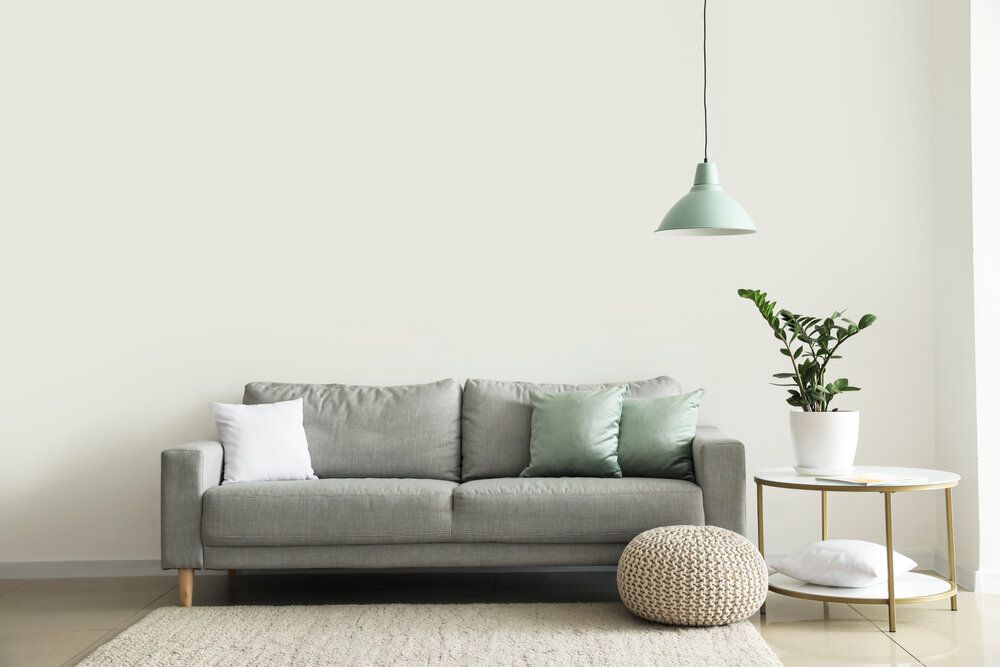Furnished or unfurnished: landlord guide
To furnish or not to furnish? That’s the question landlords need to answer before listing their property on the lettings market. While it might seem like offering a fully-furnished rental home is the way to go, there are occasions where less is more and an unfurnished property is more appealing. There are pros and cons to each option. That’s why we’ve created this guide, which looks at whether you should let your property with furniture or give renters a blank canvas.
Think about the costs involved
You can expect higher rental returns if you offer the property furnished, with data suggesting homes with furniture can achieve 21% more in rental income each month. Tenants may be willing to pay a premium to rent a place with furniture, though it’s not always the case (more on that in a bit).
Even with the potential of higher rental returns, furnishing a property is considerably more expensive than leaving it empty. Even a one-bedroom apartment requires a minimum of a bed, sofa, dining table and chairs. Plus, you will probably need to include some storage such as wardrobes and drawers if they're not already built-in. It's not inconceivable that you could pay upwards of £1,000.
Additionally, you’ll need to think about contents insurance. Landlords are usually required by their mortgage provider to get buildings insurance when they let their property, which covers the structural aspects of the building but doesn’t insure any contents, such as furniture. Therefore, your annual insurance premiums will be higher if you offer the property furnished.
It's worth considering all of these factors before deciding to offer the property furnished or unfurnished. The potential of higher rental income is appealing, but only if it more than offsets other costs involved.
What’s in higher demand: furnished or unfurnished?
Recent research revealed that tenants generally prefer a furnished property. That's not always the case, however, and it usually comes down to the tenant's circumstances moving into the property.
The average tenancy is now a little over four years, and an increasing number of people are renting their home long term after being priced out of the sales market. Tenants who plan to stay for many years are increasingly likely to put their own stamp on a place and furnish the home themselves.
It’s the same story with a family, who will probably be keen to move in and bring their own furniture with them. That’s why you need to think about factors in the local market of your buy-to-let and your investment objectives, such as the location and the type of tenant you want to attract.
Alternatively, renters moving to the country for work purposes or those living alone for the first time are likely to want a furnished property, especially as they might not see your buy to let as a long-term solution. At the same time, renters who don’t wish to carry furniture around with them from property to property will also prefer furnished homes offering a turnkey approach.
Gauging demand can be tricky, as it really does come down to personal choice. But a family moving into a four-bedroom home is more likely to want an unfinished property than a single person moving into an apartment in the city. Therefore, you should always think about the type of tenant you’re trying to attract and what they might want from the property.
What should a furnished property include?
If you go down the route of furnishing your property, you’ll want to get it right in terms of the furniture and include items that appeal to tenants. It’s best to go for a neutral tone, too. Sure, the red velvet sofa might look good to you, but it’s probably divisive and could turn away more renters than it attracts.
As for the furniture you should include, there's no hard and fast rule. But it would be best if you offered the basics, such as a:
- Sofa – most renters would expect a sofa to be included with any furnished property they rented.
- Bed – as with the sofa, a bed is a minimum requirement. The more bedrooms, the more beds required.
- Storage – you won’t always find storage in furnished rental properties, but it’s worth considering, especially in an area where there’s high competition from similar properties.
- Dining table and chairs – most renters will expect a dining table and chairs to be included in a rental property.
Extras you might want to consider
Things like TV stands, bookshelves and coffee tables are other furniture items you may decide to include, as they help give the property a more homely feel. Again, in an area where there is lots of competition, featuring these items can give you an edge over other properties where the landlord hasn't put as much thought into their furnishings.
Don’t forget: you’re responsible for furniture
While furnished properties can increase rental income and attract more renters, you should remember that you're responsible for anything supplied in the property. That means being aware of all your compliance obligations, such as ensuring that any furniture provided meets fire safety standards.
You’ll also need to replace any items that suffer from wear and tear or are faulty. And you’ll only be able to claim them against your tax bill if you replace the furniture with like-for-like items. For example, a sofa bought for £500 should be replaced with one similarly priced.
As far as electrical appliances go, such as coffee machines, kettles, toasters and TVs, you’ll need to ensure they meet safety requirements and don’t pose any hazards to tenants. So while it might seem like a good idea to include these items, you’ll need to take full responsibility for them if something goes wrong during the tenancy.
Should you include white goods in a rental property?
Landlords aren’t required to provide white goods such as fridges, freezers, washing machines and dryers in an unfurnished property. However, leaving them out will seriously reduce your chance of renting the property, even with tenants who want an unfurnished home.
It’s rare to see rental properties without white goods, and it’s more or less an unwritten rule that they’re included when tenants move in. Like any other items included, you will be responsible for white goods, from repairing faults to replacing them if necessary.
Is it worth turning your rental property into a smart home?
Adding smart home features like the ability to control the lighting from your phone and smart doorbells might seem like a good idea to attract tenants, but you should proceed with caution. Unless you’re offering a premium experience in a high-end rental home, it’s best to avoid these features.
They are expensive and can experience regular issues as they're reliant on a stable Wi-Fi connection. Therefore, you could theoretically get tenants complaining about smart features not working correctly when it's an internet issue causing the problem rather than a hardware fault. In a worst case scenario, it could actually be a hardware fault, in which case you will have an expensive gadget that is useless until you figure out how to repair it (or pay a technician to fix it for you). Smart homes probably aren't worth the trouble in a regular rental property.
Summary: a turnkey approach or blank canvas?
Before deciding whether or not to furnish a rental property or leave it unfurnished, you should always think about the cost, including the purchase price and how much it will set you back to replace them. It's also important to factor in the type of rental property and its location before making a final decision. Ultimately, it's up to you, but if you do decide to furnish the property, it's best to keep things simple and go down the neutral route. The best solution probably involves offering the home furnished or unfurnished and giving the tenant the option.
At Home Made, we offer a hybrid lettings solution that adds value at every stage of the rental process. With our game-changing new landlord platform, The Property Wallet, we offer London landlords exceptional tenant-find and property management services for a low monthly fee.
- Avoid expensive upfront fees and spread the cost of marketing your property with the option to pay monthly.
- Free rent collection and arrears chasing.
- Sign off and see all charges and payments in your dashboard.
- Real-time updates on marketing, viewings, and offers.
Prices start from just £50+VAT/mo for tenant-find and £60+VAT/mo for management. Alternatively, you can pay a one-off upfront fee of £1,200+VAT for our tenant-find service.
If you would like to speak with us about your property needs, contact us via our website to find out how we can help. If you're ready to get started, book your free valuation here.
Book valuationCheck out more of our landlord advice here and follow us on Twitter, Linkedin, and Instagram for regular updates on industry compliance standards, market insights, and Home Made company news.




